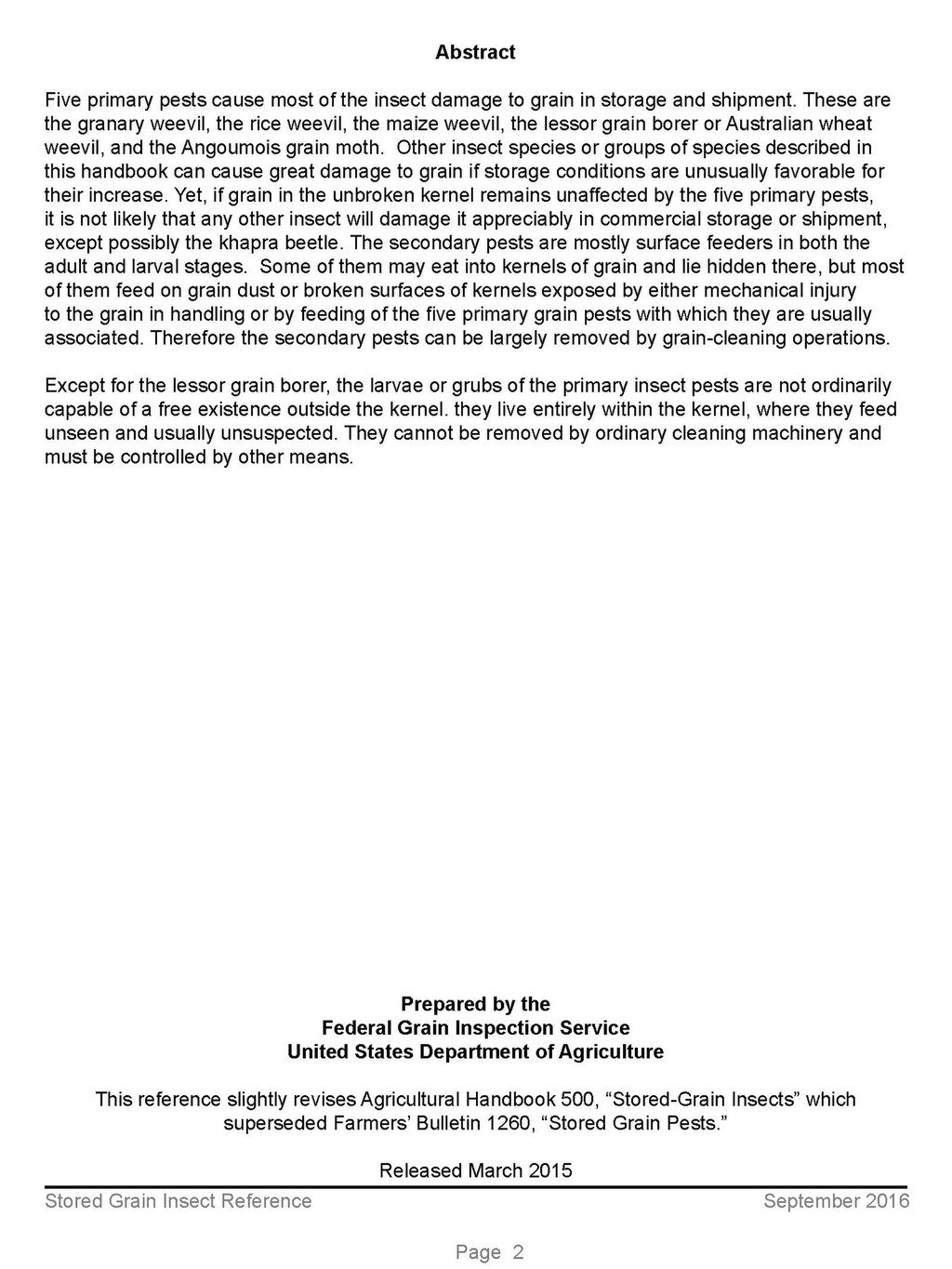Abstract
Five primary pests cause most of the insect damage to grain in storage and shipment. These are the granary weevil, the rice weevil, the maize weevil, the lessor grain borer or Australian wheat weevil, and the Angoumois grain moth. Other insect species or groups of species described in this handbook can cause great damage to grain if storage conditions are unusually favorable for their increase. Yet, if grain in the unbroken kernel remains unaffected by the five primary pests, it is not likely that any other insect will damage it appreciably in commercial storage or shipment, except possibly the khapra beetle. The secondary pests are mostly surface feeders in both the adult and larval stages. Some of them may eat into kernels of grain and lie hidden there, but most of them feed on grain dust or broken surfaces of kernels exposed by either mechanical injury to the grain in handling or by feeding of the five primary grain pests with which they are usually associated. Therefore the secondary pests can be largely removed by grain-cleaning operations.
Except for the lessor grain borer, the larvae or grubs of the primary insect pests are not ordinarily capable of a free existence outside the kernel. they live entirely within the kernel, where they feed unseen and usually unsuspected. They cannot be removed by ordinary cleaning machinery and must be controlled by other means.
Prepared by the
Federal Grain Inspection Service
United States Department of Agriculture
This reference slightly revises Agricultural Handbook 500, “Stored-Grain Insects” which superseded Farmers’ Bulletin 1260, “Stored Grain Pests.”
Released March 2015
Page 2

